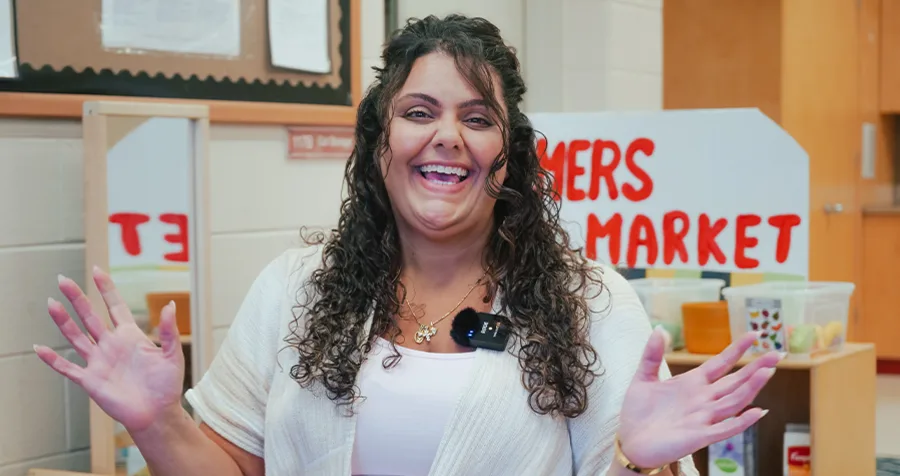
Educators are at the heart of every YMCA child care centre. They not only care for children, they also invest time in building genuine relationships with them as play partners. The YMCA Playing to Learn™ curriculum is the basis for every activity in the YMCA infant, toddler, and preschool classrooms. Meet a Y Educator is a series that shines a light on dedicated YMCA educators. As you read on, you’ll not only learn about the intention behind each setup in a classroom to encourage play-based learning, but you’ll also see it through the eyes of one of the Y's educators: Josie.
Meet Josie
Josie has worked in child care at the YMCA for over 19 years! At a young age, Josie knew she wanted to become a Registered Early Childhood Educator (RECE) to help children learn and grow. She graduated with a diploma in Early Childhood Education from Centennial College.
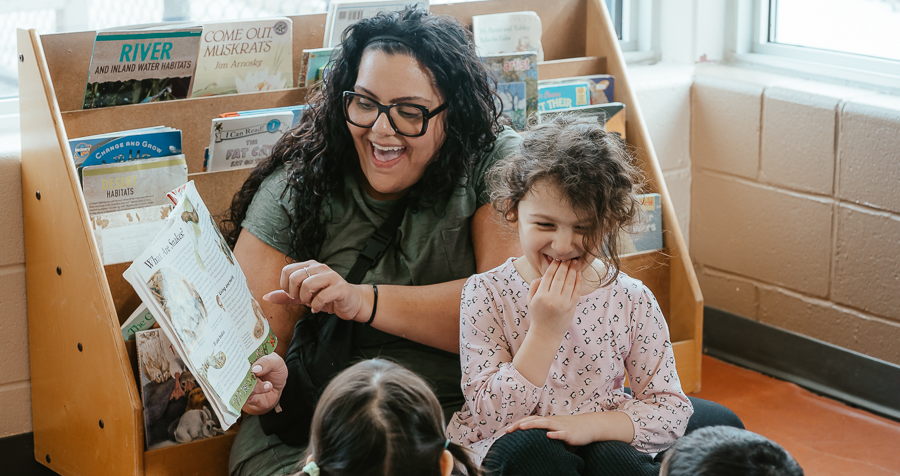
Josie has worked with infants to school-age children. Her favourite age group to care for is toddlers ages 18 to 30 months because they’re filled with curiosity, fun, love, and much more. The joy of watching them grow has been a highlight of her career. Josie aims to make learning fun and relevant to every child.
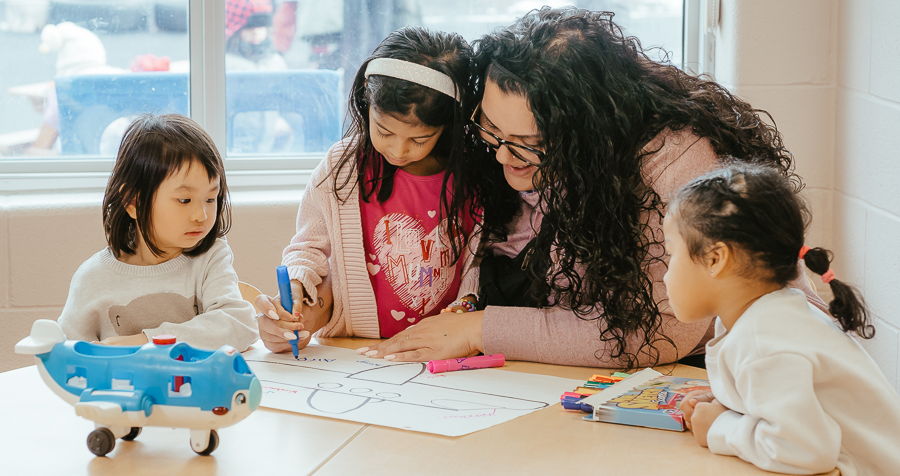
Josie took a break from the toddler room to answer questions about her life as a YMCA RECE. From her most memorable moment at work to her advice for new educators, check out this rapid-fire Q&A.
Explore a farm-inspired classroom
Calm, warm tones with neutral colours create a tranquil environment for children in YMCA child care classrooms; you’ll find soft brown, wooden elements and vibrant plants. Josie’s classroom this week is tailored to the children’s interest in farms. A child recently went to a farm and had a blast, sparking the idea to transform the classroom into a farm with animals, a farmers market, a sensory bin, and more. Take a look.
Three farm-theme setups in Josie’s classroom
All activities in a Y Child Care classroom stem from the children’s interests. As you read above, Josie’s classroom stemmed from the children’s interest in the farm that week, including farm animals and a farmers market. It’s a great opportunity to build the children’s vocabulary and provide opportunities for them to play.
Educators like Josie are tuned into children’s interests through documentation to reflect and implement activities tailored to the children’s interests weekly. They create experiences that are like playgrounds for children’s learning.
These three setups are based on the Y’s Playing to Learn™ curriculum.
1. Farmers market: Dramatic area
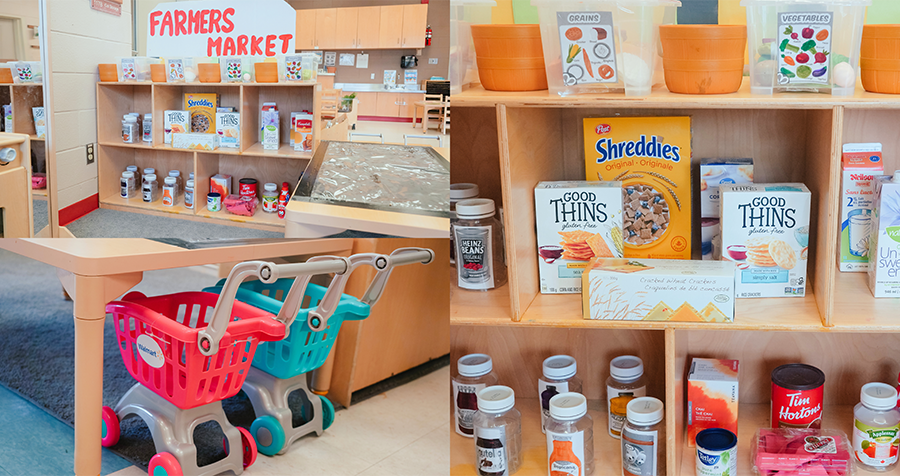
What you may see: A fun play area for children to pretend they’re at a farmers market.
What Josie saw: “I came up with creating a farmers market the dramatic area because, after the weekend, a child approached me and said, ‘I go farm, I get pumpkin and apples.’ I responded, ‘Wow! You went to the farm to get pumpkins and apples? That sounds like a lot of fun.’ This became a conversation between the child and me. As the other children overheard our conversation, they came over and shared their experiences at the farmers markets. This sparked the idea to create a farmers market in the dramatic area. Dramatic play allows the children to use their imagination. They can connect what they visualize and learn in the real world and bring that into their play.”
2. Farm animals: Sensory area
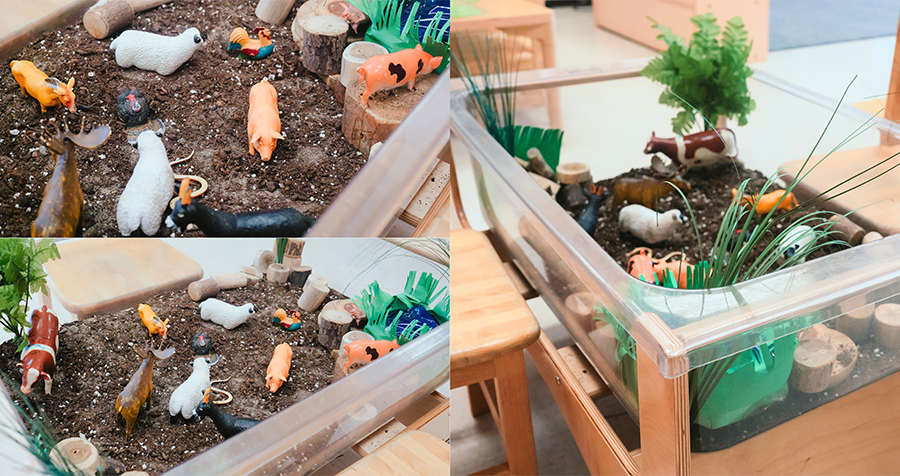
What you may see: Toy farm animals in a bin filled with soil and fake plants.
What Josie saw: “While I was singing with the children, a child sang Old MacDonald Had a Farm; the children and I sang along. While singing, the children would name the farm animals and make their animal sounds. After, I invited the children to come join me at the sensory bin. I asked the children about what things we can add to our sensory bin. With the children’s ideas, I added soil, farm animals, and plastic plants. In addition, I added bowls and shovels to the sensory bin to have the children scoop and pour the soil. This activity helps the children use their senses and develop their eye-hand coordination by scooping and pouring the soil and their social and language skills while communicating with their peers and caregivers.”
3. Apple tree matching

What you may see: Paper cut-outs of fruit and trees.
What Josie saw: “This apple tree activity is an extension of the children's interest in the farmers market. I observed the children pretend to go apple picking while playing in the dramatic area. The children carried baskets and added plastic apples to their baskets. A child invited me to join by handing me a basket. As I participated in apple picking, I thought to create an apple tree matching game to extend their knowledge. Throughout this activity, the children used their problem-solving skills to match the circular shapes to the picture of the apple tree.”
Y educators truly understand that play-based learning is crucial for a child’s development. As play partners, Y educators observe children’s interests and develop activities that involve play. After all, play is what children naturally do. And for educators like Josie, being a part of a child’s growth and development by being a play partner is not just a career but a life’s calling.


















